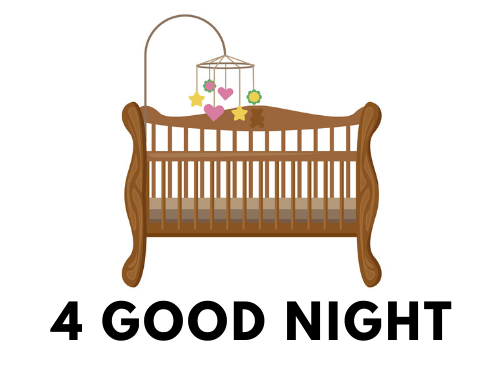Introduction
Navigating the first few months of motherhood can feel like a whirlwind of joy, sleepless nights, and countless questions. One question that probably keeps popping into your mind is, “How should I manage my 3-month-old baby’s sleep schedule?” Don’t fret, mama!
This comprehensive guide is here to provide all the answers. You’ll find practical advice on creating an optimal sleep environment, dealing with sleep regressions, understanding your baby’s sleep needs, and much more. By the end of this post, you’ll be equipped with valuable knowledge to help you and your little one achieve a harmonious sleep schedule.
Understanding the Sleep Needs of a 3-Month Old Baby
By the time your baby reaches 3 months old, they typically sleep around 14-16 hours a day, including nighttime sleep and several daytime naps. Unlike newborns, 3-month-olds start to have a more predictable sleep pattern, with longer stretches of sleep at night.
However, every baby is unique, and sleep requirements can vary. Observing your baby’s cues, such as yawning, rubbing eyes, and fussiness, can help identify when they are ready for sleep.
Creating an Optimal Sleep Environment for Your 3-Month Old
An ideal sleep environment is crucial for your baby’s quality of sleep. The room should be quiet, dark, and at a comfortable temperature. Consider using a white noise machine to mask disturbing sounds and blackout curtains to maintain darkness.
Additionally, ensure that the crib or bassinet meets safety standards, is free from loose bedding or toys, and the baby is placed on their back to sleep. This not only promotes better sleep but also significantly reduces the risk of SIDS (Sudden Infant Death Syndrome).

3-Month Old Sleep Regression: Causes and Solutions
Sleep regression is a period when a baby who has been sleeping well suddenly starts waking up more frequently and has trouble going back to sleep. Common around 3-4 months of age, this can be due to developmental milestones, growth spurts, or changes in sleep cycles.
Maintain a consistent bedtime routine, provide comforting measures, and ensure your baby has plenty of opportunities to nap during the day to help them navigate through this phase.
Incorporating Nap Time into Your 3-Month Old’s Sleep Schedule
At 3 months old, babies usually need about 3-4 naps per day, each lasting anywhere between 30 minutes to 2 hours. Structuring these naps into the daily routine helps in maintaining a consistent sleep schedule.
Observe your baby for signs of sleepiness and start the nap routine then, ideally before they become overtired. This can prevent your baby from becoming overly tired, which ironically makes it harder for them to sleep.
Signs of Sleep Deprivation in a 3-Month Old Baby
Recognizing sleep deprivation signs in your baby is crucial. Over tiredness can lead to fussiness, difficulty falling asleep, frequent night wakings, and short naps. In the long term, chronic sleep deprivation can affect their growth and development. So, it’s essential to address sleep issues promptly and ensure your baby gets the sleep they need.

Feeding Schedule Impact on 3-Month Old Sleep Patterns
Feeding and sleep schedules go hand-in-hand. At 3 months old, many babies begin to sleep for longer stretches at night and may start to drop night feedings. However, they still typically need to eat every 3-4 hours during the day. An adequately fed baby tends to sleep better, so maintaining a regular feeding schedule can help promote better sleep.
Adjusting Your Baby’s Sleep Schedule at 3 Months
There’s no one-size-fits-all sleep schedule for a 3-month-old as each baby’s sleep needs are unique. However, a general pattern would include nighttime sleep of about 10-12 hours and daytime naps totaling 3-5 hours. It’s crucial to create a flexible routine that respects your baby’s natural sleep rhythms while providing consistency.
Co-sleeping vs. Solo Sleeping for a 3-Month Old: Which is Better?
The choice between co-sleeping and solo sleeping is a personal decision that depends on various factors like family preference, safety considerations, and the baby’s comfort. While co-sleeping can make night feedings easier and may help the baby feel secure, solo sleeping can help the baby develop independent sleep skills. Ensure whichever option you choose follows safe sleep guidelines.

Transitioning a 3-Month Old Baby to a Regular Sleep Schedule
Moving towards a regular sleep schedule involves consistency and patience. Implement a simple bedtime routine to signal to your baby that it’s time to sleep. This could include a warm bath, a feeding, and a bedtime story or lullaby. It’s also helpful to establish regular naptimes during the day. Remember, it’s all about responding to your baby’s cues and adjusting the routine as needed.
The Impact of Sleep Aids on a 3-Month Old Baby’s Sleep Schedule
Sleep aids like pacifiers, white noise machines, and swaddling blankets can be beneficial in settling a 3-month-old baby to sleep. However, they should be used wisely. Over-reliance can lead to sleep associations, where the baby struggles to sleep without these aids.
As always, safety is paramount; for example, swaddling should only be used until the baby shows signs of rolling over.

Understanding the Sleep-Wake Cycle of a 3-Month Old
Babies’ sleep cycles are shorter than adults’. At 3 months, they start to develop more mature sleep patterns, spending more time in “quiet” sleep (similar to our deep sleep). Understanding this helps parents manage their expectations and navigate night wakings or short naps better.
Nighttime Routine Suggestions for Your 3-Month Old Baby
A consistent nighttime routine is key to signaling your baby that it’s time to wind down and prepare for sleep. It can include a series of calming activities like a warm bath, a gentle massage, reading a book, singing a lullaby, and then a goodnight kiss. Ensure the routine is calm, consistent, and in a similar order each night.
Troubleshooting Common Sleep Issues in 3-Month Old Babies
Common sleep issues at this age include frequent night wakings, short naps, difficulty settling, and sleep regressions. These can be tackled by maintaining a consistent sleep schedule, ensuring your baby is well-fed, using appropriate sleep aids, and providing a conducive sleep environment. Remember, every baby is different, and what works for one might not work for another.
Surviving Sleep Disturbances with Your 3-Month Old: Tips for Parents
As a new parent, it’s essential to manage your sleep too. Tips to survive this phase include sharing nighttime duties with a partner, sleeping when the baby sleeps, maintaining a healthy diet and staying hydrated, taking short, refreshing naps during the day, and practicing relaxation techniques to manage stress.
Promoting Better Sleep Habits for Your 3-Month Old Baby
To encourage better sleep habits, establish a regular sleep schedule, implement a consistent bedtime routine, ensure the sleep environment is safe and comfortable, and watch for signs of sleep readiness. As your baby grows, adjust the routine to meet their changing sleep needs.

Sleep Training Methods Suitable for a 3-Month Old Baby
While many experts recommend starting formal sleep training around 4-6 months of age, you can begin to establish healthy sleep habits from as early as 3 months. This might involve simple strategies like encouraging self-soothing, laying the baby down drowsy but awake, and maintaining a consistent sleep schedule.
The Impact of Growth Spurts on a 3-Month Old’s Sleep Schedule
At around 3 months, many babies experience a growth spurt, which may disrupt their sleep. They might sleep more than usual, have increased night wakings, or show more hunger. Understanding this can help parents navigate these changes without stressing about their baby’s sleep patterns.
Identifying Sleep Disorders in Your 3-Month Old Baby
While rare, sleep disorders can occur even in young infants. These might include conditions like sleep apnea, excessive snoring, or restless leg syndrome. If you notice unusual sleep behaviors or excessive fussiness and restlessness during sleep, it’s best to consult a pediatrician.
The Role of Swaddling in a 3-Month Old’s Sleep Schedule
Swaddling can soothe a fussy baby and help them feel secure, thereby promoting better sleep. However, once your baby starts showing signs of rolling over, it’s time to stop swaddling for safety reasons. Some babies might resist swaddling, in which case it’s fine to skip this step.

Tips for Balancing Daytime and Nighttime Sleep for a 3-Month Old
Help your baby distinguish between day and night by keeping the house light and active during the day and dark and quiet at night. While ensuring they get adequate naps during the day, avoid letting them sleep too long to maintain a good balance between daytime and nighttime sleep.
Table: Sample 3-Month Old Sleep Schedule
| Time | Activity |
|---|---|
| 7:00 AM | Wake-up and feeding |
| 9:00 AM | Nap |
| 11:00 AM | Feeding |
| 1:00 PM | Nap |
| 3:00 PM | Feeding |
| 5:00 PM | Short Nap |
| 7:00 PM | Feeding |
| 9:00 PM | Bedtime Routine |
| 10:00 PM | Sleep |
Conclusion
Navigating your 3-month old’s sleep schedule is a journey filled with trial and error, patience, and lots of love. Every baby is unique, and what works for one may not work for another. Yet, the universal key lies in consistency, understanding your baby’s sleep cues, and creating a secure, comforting sleep environment. Don’t worry, new mama! You’re doing a fantastic job, and remember, it’s okay to ask for help when you need it.
Additional Insights
Soothing Techniques for a Sleep-Resistant 3-Month Old
At times, your little one may resist sleep despite being tired. Understanding various soothing techniques, such as rocking, shushing, or offering a pacifier, can be beneficial during these periods.
The Influence of Teething on a 3-Month Old’s Sleep
While early for most, some babies begin teething around three months. If your baby is unusually fussy and has trouble sleeping, teething could be a potential cause.
Navigating the Transition from Two Naps to Three
As your baby grows, they’ll transition from multiple naps to fewer, longer ones. Recognizing the signs of this transition can help you adjust your baby’s sleep schedule accordingly.
The Role of Pediatrician Consultation in Sleep Scheduling
Routine pediatrician consultations can provide valuable insights into your baby’s sleep patterns, helping address any concerns and offering personalized advice.
Disclaimer
The information contained in this post is based on personal experiences and research conducted by a fellow mom, using observations from her own children and those of her friends. While this post also includes insights from a pediatrician, it should not be used as a substitute for professional medical advice, diagnosis, or treatment.
Every child is unique, and what works for one might not work for another. Always consult your own pediatrician or healthcare provider with any questions or concerns you may have regarding your child’s health and well-being.














